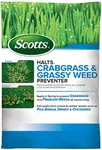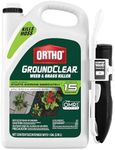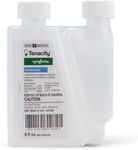Buying Guide for the Best Herbicides
Choosing the right herbicide can be crucial for maintaining a healthy and productive garden, lawn, or agricultural field. Herbicides are chemicals used to control unwanted plants, commonly known as weeds. The right herbicide will help you manage weeds effectively without harming your desired plants. To make an informed decision, you need to understand the key specifications and how they align with your specific needs. Here are the key specs to consider when selecting a herbicide:Type of HerbicideHerbicides can be classified into two main types: selective and non-selective. Selective herbicides target specific types of weeds while leaving other plants unharmed, making them ideal for lawns and gardens where you want to protect certain plants. Non-selective herbicides kill all plants they come into contact with, which is useful for clearing areas completely. Choose selective herbicides if you need to protect certain plants, and non-selective if you need to clear an area entirely.
Mode of ActionThe mode of action refers to how the herbicide affects the plant. Systemic herbicides are absorbed by the plant and move throughout its tissues, killing it from the inside out. Contact herbicides, on the other hand, kill only the parts of the plant they touch. Systemic herbicides are effective for perennial weeds with deep root systems, while contact herbicides are suitable for annual weeds and quick results. Consider the type of weeds you are dealing with and their growth patterns when choosing the mode of action.
Application MethodHerbicides can be applied in various ways, including sprays, granules, and liquids. Sprays are easy to apply and can cover large areas quickly, making them ideal for lawns and fields. Granules are spread over the soil and are activated by water, which can be useful for pre-emergent weed control. Liquids can be mixed with water and applied directly to the soil or plants. Choose the application method that best fits your area size, weed type, and convenience.
Residual ActivityResidual activity refers to how long the herbicide remains active in the soil after application. Some herbicides break down quickly and have no lasting effect, while others can remain active for months, preventing new weeds from growing. Short-residual herbicides are suitable for areas where you plan to replant soon, while long-residual herbicides are ideal for areas where you want prolonged weed control. Consider your planting schedule and the need for long-term weed prevention when selecting residual activity.
Environmental ImpactHerbicides can have varying levels of environmental impact. Some are designed to break down quickly and have minimal impact on the environment, while others can persist and potentially harm non-target plants, animals, and water sources. Look for herbicides that are labeled as environmentally friendly or have low toxicity if you are concerned about the impact on your surroundings. Consider the proximity to water sources, wildlife, and other sensitive areas when evaluating environmental impact.
Weed SpectrumThe weed spectrum refers to the range of weed species that the herbicide can control. Some herbicides are broad-spectrum and can control a wide variety of weeds, while others are narrow-spectrum and target specific types. Broad-spectrum herbicides are useful for general weed control, while narrow-spectrum herbicides are better for targeting specific problem weeds. Identify the types of weeds you are dealing with and choose a herbicide that effectively targets those species.




















